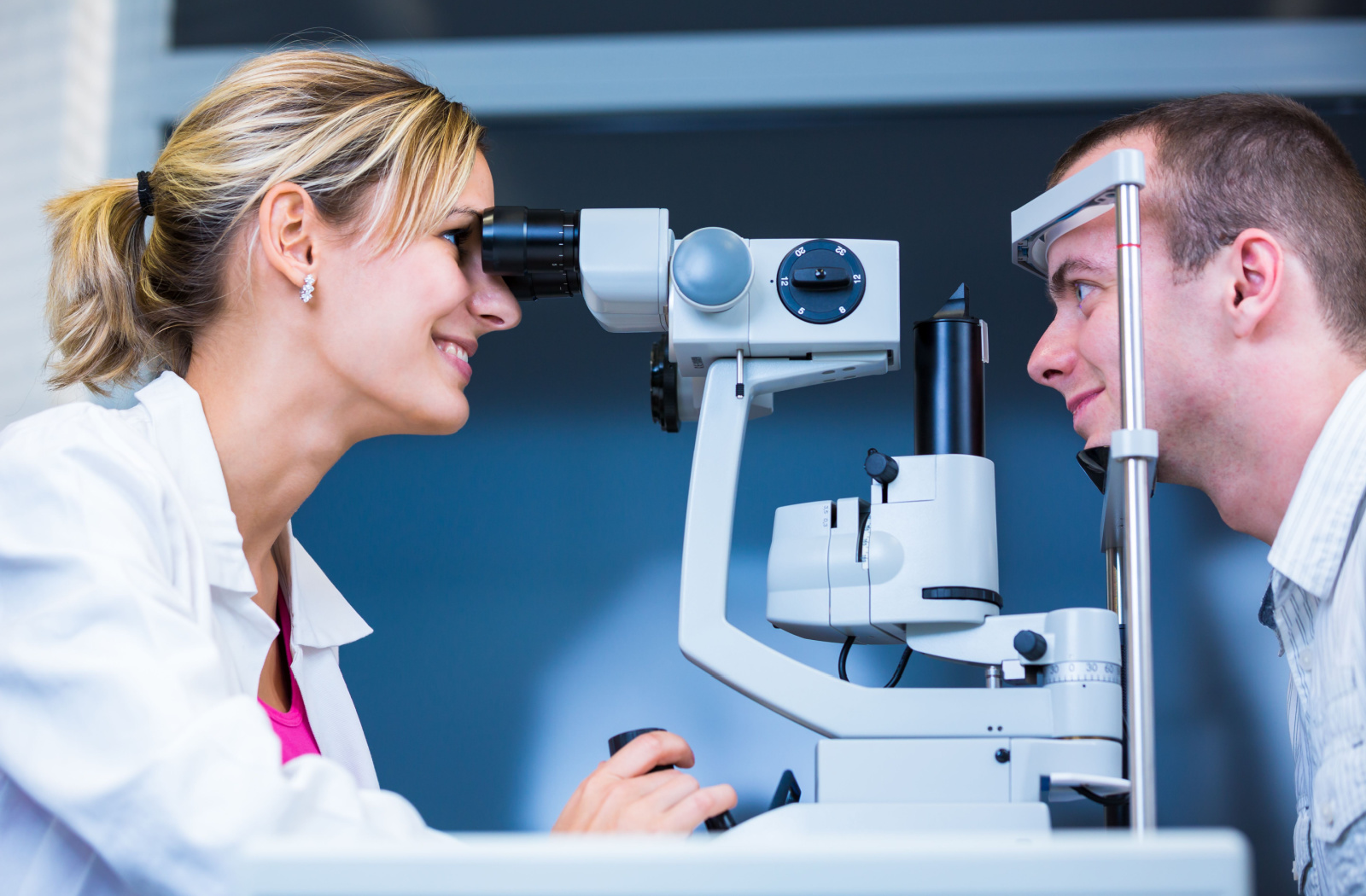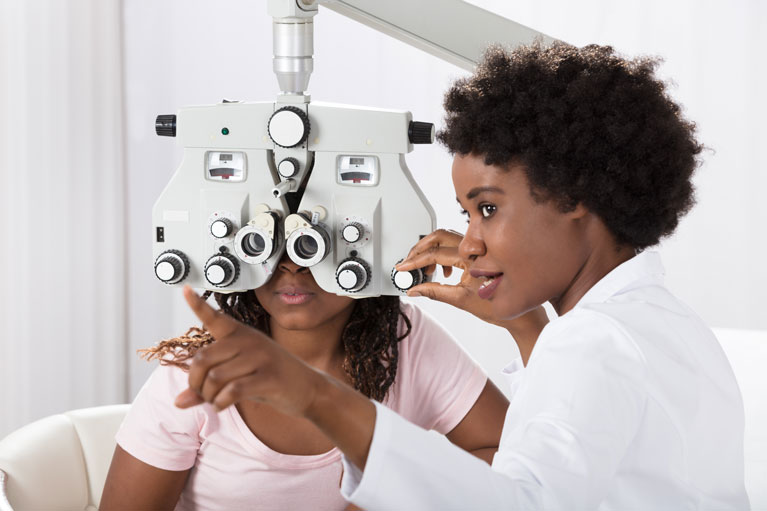Trustworthy Opticore Optometry: Elevating Your Eye Health Experience
Trustworthy Opticore Optometry: Elevating Your Eye Health Experience
Blog Article
The Comprehensive Eye Exam: What to Anticipate During Your Visit to the Eye Physician
A check out to the eye physician for a comprehensive eye examination is even more than a regular check-up; it is an important step in protecting your visual health and wellness. What specifically takes place throughout the eye wellness analysis, and exactly how does it affect the prescription procedure?
First Assessment
The preliminary consultation during an eye test offers as a vital structure for understanding an individual's aesthetic wellness demands. This phase sets the tone for the entire evaluation procedure, enabling the optometrist to gather necessary information about the individual's case history, lifestyle, and certain vision concerns. By thoroughly reviewing any pre-existing problems, drugs, or previous surgical treatments, the eye care expert can tailor the assessment to resolve specific requirements properly.

Moreover, the preliminary appointment is a chance for clients to voice any kind of inquiries or worries, promoting a joint partnership with their doctor. This interaction not just ensures that the person feels informed and comfortable however additionally encourages them to get involved proactively in their eye health management. Jointly, these discussions allow the optometrist to design a customized exam plan, guaranteeing optimal treatment and specific medical diagnosis.
Visual Skill Test
Beginning the core components of an eye exam, the visual skill test is designed to evaluate the sharpness and clearness of an individual's vision. This crucial examination aids establish how well a person can determine letters or signs at a standardized range, usually making use of a Snellen chart (Eye Doctor). The chart consists of rows of letters that decrease in dimension inside out, with the person placed at a customary range of 20 feet
Throughout the examination, the client is asked to cover one eye and read aloud the smallest line of letters they can see clearly. This process is repeated for the other eye. The outcomes are taped as a fraction, with 20/20 vision indicating typical visual skill-- where the patient can see at 20 feet what an individual with typical vision can see at that distance.
The visual skill test additionally determines prospective refractive errors such as hyperopia, astigmatism, or nearsightedness, which may demand corrective lenses. By establishing a standard of visual performance, the test is an important analysis device that aids the eye treatment expert in creating a proper therapy plan tailored to the client's one-of-a-kind visual requirements.
Eye Health Analysis
Complying with the aesthetic skill examination, a comprehensive eye health and wellness assessment is carried out to ensure the general well-being of the eyes. This critical sector of the eye examination involves a complete evaluation of both the internal and exterior structures of the eye. The eye doctor or optometrist starts by analyzing the eyelids, cornea, conjunctiva, and sclera for any type of indications go to this site of infection, swelling, or abnormalities. Making use of specialized tools like a slit light, the specialist gains a multiplied sight of the eye's composition, making it possible for comprehensive inspection.
Next, focus changes to the interior structures. Through the use of ophthalmoscopy or fundus photography, the retina, optic nerve, and capillary are meticulously evaluated. This action is important for recognizing conditions such as retinal detachment, glaucoma, or diabetic retinopathy. In most cases, student expansion is done to improve visibility of the internal eye structures, although this might lead to momentary light level of sensitivity for the patient.
Furthermore, intraocular stress is gauged to screen for glaucoma risk. This is normally done utilizing tonometry, which can find raised pressure degrees that may suggest potential damage to the optic nerve. Collectively, these assessments develop an visit our website extensive analysis to maintain ocular wellness.
Refraction and Prescription
Refraction is a sophisticated procedure carried out by eye care specialists to establish the precise lens power required to deal with refractive errors such as nearsightedness, astigmatism, presbyopia, and hyperopia. The goal of this procedure is to analyze how light bends as it passes through the eye, enabling the practitioner to figure out whether restorative lenses are needed for enhanced visual skill.
Throughout the refraction process, the client is asked to look with a phoropter, a gadget that includes numerous lenses. The specialist will systematically alter these lenses and ask the client to contrast clearness between options until the best feasible vision is accomplished. This treatment is important in crafting an accurate prescription that defines the appropriate lens power for glasses or get in touch with lenses.
The prescription derived from this treatment not just enhances vision but additionally works as a foundation for picking suitable restorative eyewear. It is necessary to make sure that prescriptions are regularly updated, as modifications in vision can occur in time, stressing the relevance of regular eye examinations. This careful interest to information aids keep clear, comfy vision in day-to-day live.
Follow-Up Suggestions

Throughout a follow-up go to, the eye doctor will certainly carry out a series of examinations to evaluate visual acuity and check for any type of adjustments in vision that could require an update to the prescription. Additionally, the follow-up supplies a chance to go over any kind of pain or problems experienced with present eyeglasses. Adjustments can be made to make certain comfort and efficacy, whether with lens modification or frame changes.
For people with recurring conditions such as glaucoma, diabetes-related eye issues, or macular degeneration, more frequent follow-ups may be necessary. These consultations are important for handling and potentially slowing down the progression of eye condition. Complying with these suggestions can significantly add to preserving visual health and avoiding lasting issues.
Verdict
The detailed eye exam is a vital procedure for keeping aesthetic wellness, encompassing an in-depth assessment of medical background and vision problems. Trick parts consist of the aesthetic skill examination, which reviews sight clearness, and the eye wellness evaluation, which checks out the total condition of the eyes. Refraction tests aid determine the exact lens prescription essential for optimal vision modification. Follow-up recommendations offer advice for continuous eye care, making sure that any prospective concerns are addressed without delay and properly.
A browse through to the eye doctor for a thorough eye examination is even more than a routine examination; it is an important action in protecting your aesthetic health.Kicking off the core elements of an eye examination, the visual acuity test is made to evaluate the sharpness and clearness of a person's vision.Following the aesthetic acuity examination, a detailed eye health assessment is conducted to make certain the general well-being of the eyes. These check outs enable the eye treatment expert to keep an eye on adjustments in vision, upgrade prescriptions, and examine the total health of the eyes. Key elements consist of the visual acuity examination, which evaluates eyesight quality, and the eye health and wellness assessment, which checks out the total problem of the eyes.
Report this page